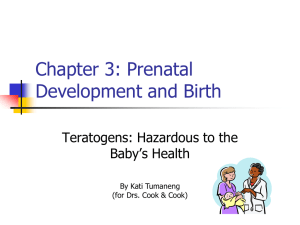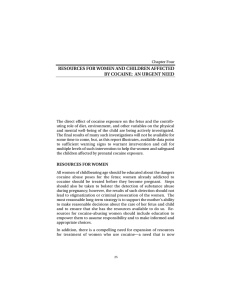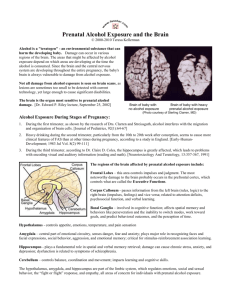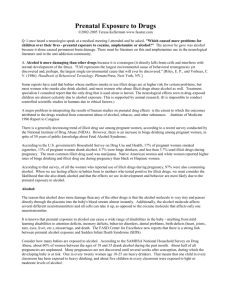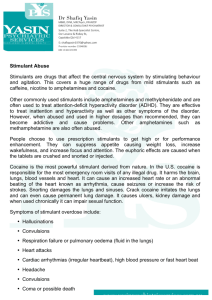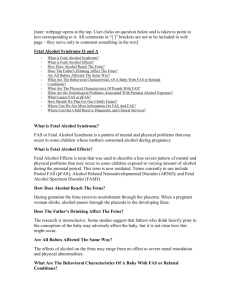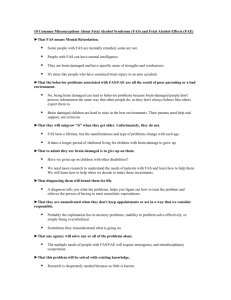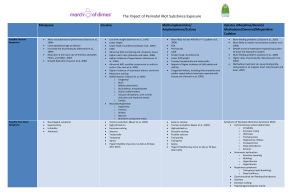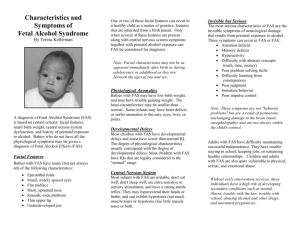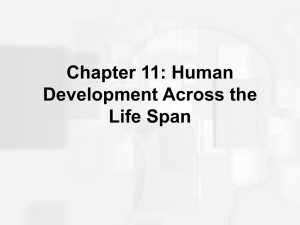PRENATAL DRUG EXPOSURE
advertisement
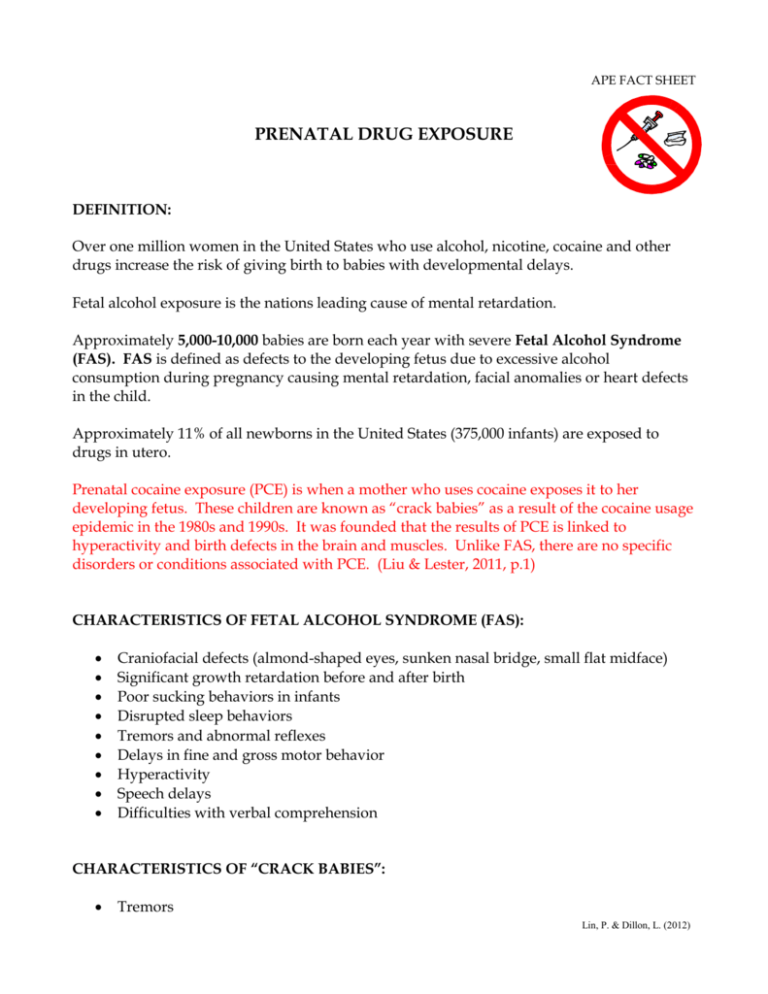
APE FACT SHEET PRENATAL DRUG EXPOSURE DEFINITION: Over one million women in the United States who use alcohol, nicotine, cocaine and other drugs increase the risk of giving birth to babies with developmental delays. Fetal alcohol exposure is the nations leading cause of mental retardation. Approximately 5,000-10,000 babies are born each year with severe Fetal Alcohol Syndrome (FAS). FAS is defined as defects to the developing fetus due to excessive alcohol consumption during pregnancy causing mental retardation, facial anomalies or heart defects in the child. Approximately 11% of all newborns in the United States (375,000 infants) are exposed to drugs in utero. Prenatal cocaine exposure (PCE) is when a mother who uses cocaine exposes it to her developing fetus. These children are known as “crack babies” as a result of the cocaine usage epidemic in the 1980s and 1990s. It was founded that the results of PCE is linked to hyperactivity and birth defects in the brain and muscles. Unlike FAS, there are no specific disorders or conditions associated with PCE. (Liu & Lester, 2011, p.1) CHARACTERISTICS OF FETAL ALCOHOL SYNDROME (FAS): Craniofacial defects (almond-shaped eyes, sunken nasal bridge, small flat midface) Significant growth retardation before and after birth Poor sucking behaviors in infants Disrupted sleep behaviors Tremors and abnormal reflexes Delays in fine and gross motor behavior Hyperactivity Speech delays Difficulties with verbal comprehension CHARACTERISTICS OF “CRACK BABIES”: Tremors Lin, P. & Dillon, L. (2012) Chronic irritability Poor visual orientation Strokes and/or seizures as infants Smaller head circumference Missing bowels Violent tendencies Hyperactivity Learning difficulties Little or no understanding of cause and effect Aggression towards peers Inability to play spontaneously Impulsive Hypertonia due to brain trauma Distractible Low Apgar scores (Apgar scores are indicators of the infant’s status immediately after birth, including breathing, color, heart rate, muscle tone and overall behavior) TEACHING TIPS: Create exploration and play activities for the child’s development needs. Create a structured and predictable environment. Develop rules that are clear, concrete and concise. Provide a 1:1 teacher/student ratio. Provide a positive role model for the child to imitate. Create a functional and creative environment for the child to play. Prenatal drug exposure often continues to affect the child as he/she enters school. These children and young adults demonstrate an exaggerated need for routine in a patient and structured environment, and one-on-one attention from teachers and care givers. Reference: Liu, J. & Lester, B. (2011). Reconceptualizing in a dual-system model the effects of prenatal cocaine exposure on adolescent development: a short review. International Journal of Developmental Neuroscience, 29, p. 803-809. Information on this sheet contains only suggested guidelines. Each student must be considered individually, and in many cases, a physician’s written consent should be obtained. Lin, P. & Dillon, L. (2012)
